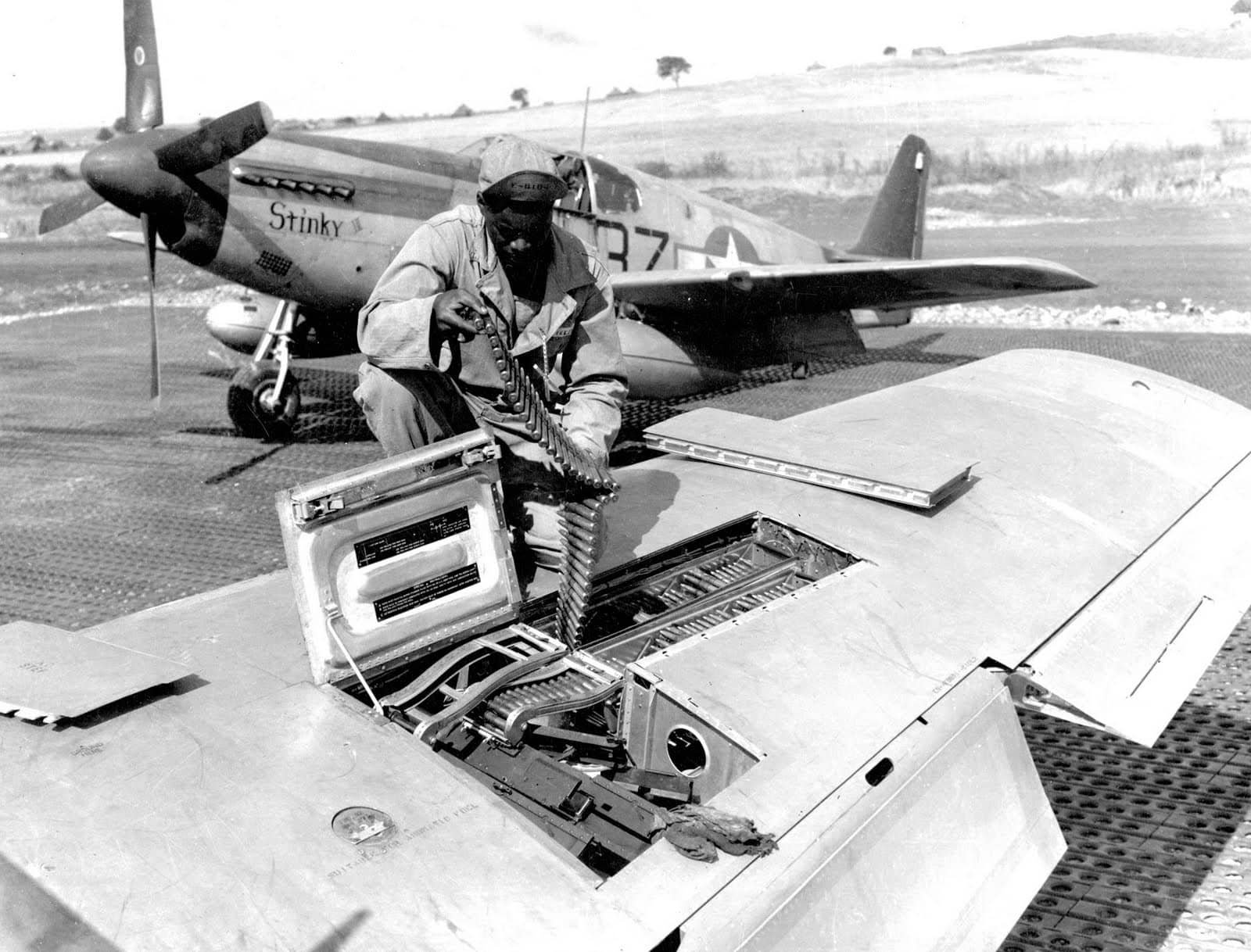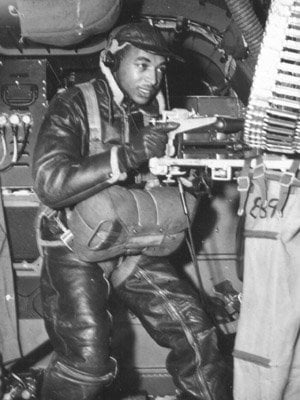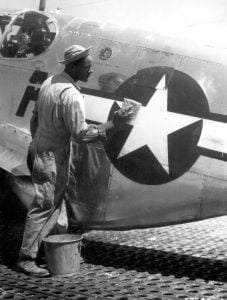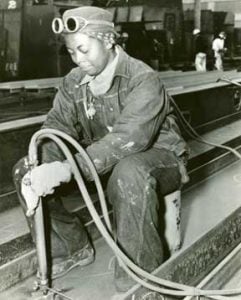
The Support Crews
The group that is collectively known as the Tuskegee Airmen includes more than the 992 pilots that trained in the Tuskegee program and became officers. It also includes the over 14,000 personnel that were trained to provide critical operational support to the pilots and their aircraft. This training took place at Tuskegee, but also in Illinois, Mississippi, Texas, New Jersey, New York, Georgia, and Wisconsin.
Some were officers, like the men who trained to be navigators and bombardiers on bomber aircraft, but most were enlisted men and women without whom the program would not have succeeded. Many endured the dangers of war alongside the pilots, and all served in a segregated military that, at the time, limited their opportunities to serve their country.
Because the Tuskegee facility was not ready for them when they needed to start training, the first group of flight support personnel for the Tuskegee Airmen trained at Chanute Air Base in Rantoul, Illinois. The program left Chanute for Tuskegee in late fall of 1941.
Learn more about:
Tuskegee Airmen meteorologists
Click here to read “Tuskegee Airmen- Black Meterologists in WW2”
A Woman’s Perspective of Serving with the Tuskegee Airmen Support Personnel
The many faces of “Rosie the Riveter”
Haitians who served with the Tuskegee Airmen

Sharing credit for the fighter pilots’ victory over Nazis are mechanics George Johnson, James C. Howard, and an unidentified Airman. Their outfit, the 99th Fighter Squadron, bagged 12 Nazi fighter planes in two days.

Members of the ground crew of the fighter squadron of the 15th U.S. Air Force in Italy place a loaded wing tank on a P-51 Mustang before the group takes off on another mission escorting bombers over enemy targets. The squadron uses the auxiliary fuel tanks for long distance flights. Left to right: T/Sgt. Charles K. Haynes, S/Sgt. James A. Sheppard, and M/Sgt. Frank Bradley.

Alfred Morris, crew chief of the 332nd Fighter Group of the U.S. Army Air Corps, helps his pilot, Captain William Mattison close the canopy of his P-51 Mustang fighter plane just before take-off in Italy.

Female machinists and other skilled laborers represent the many faces of Rosie the Riveter and the large part they played in building planes during the war.

An armorer of the 15th U.S. Air Force checks ammunition belts of the .50 caliber machine guns in the wings of a P-51 Mustang fighter plane before it leaves an Italian base for a mission against German military targets. The 15th Air Force was organized for long range assault missions and its fighters and bombers range over enemy targets in occupied and satellite nations, as well as Germany itself.

A waist gunner, crew on a B-25 bomber, trains to handle the machine gun.

Staff Sgt. William Acco, crew chief in the 15th U.S. Air Force, washes down the P-51 Mustang fighter plane of his pilot with soap and water before waxing it to give it more speed.

Nurses from the base hospital at Tuskegee Army Air Field, Alabama, receive familiarization training on one of the training aircraft. This training included an orientation ride in the BT-13 aircraft.


